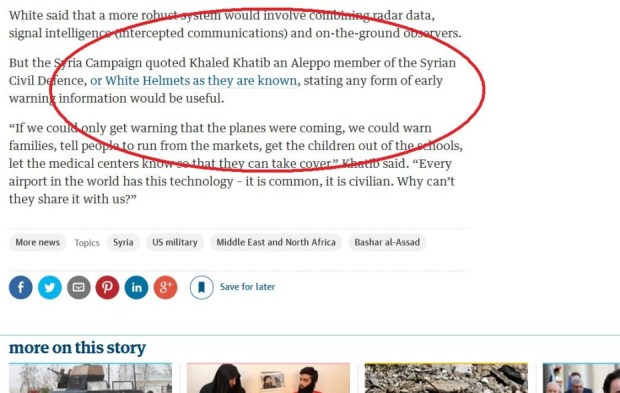Aug 25
20150
Amnesty International, Avaaz, Non-Profit Industrial Complex, Purpose Inc.
Avaaz Human Rights Watch Ken Roth Purpose Inc. Syrian Civil Defence The Syria Campaign White Helmets
Note on Credibility & Lack of Impartiality of Those Making Anti-Syria Allegations
August 25, 2015
by Eva Bartlett
So today, coming across yet another tool of the Imperialist/Zionist war on Syria who is sharing propaganda photos and posts which purport the depicted people to be victims of the Syrian Army, we dug a little deeper.
Who was the photographer? Are these photos *actually* from Syria or elsewhere? *If* in Syria, when were the photos taken, where, what context…?
This would be a gargantuan investigation, if one is to look at every MSM allegation against Syria and follow the photo trail. It needs to be done, but will certainly take much time, as there is SO much mis-information and outright LIES out there on Syria (for example, Ken Roth of Human Rights Watch tweeting a video of zionist-bombed and flattened al-Shujayee, Gaza, summer 2014, and claiming it to be Aleppo under “Assad’s barrel bombs”… that is just one of Roth’s many deceitful tweets. Due to outcry, he had to retract his tweet, but that hasn’t stopped his further lies.).
However, let’s take the case of Khaled Khatib, a photographer in Aleppo whose photos many MSM publications have used.
His photos put hearts on sleeves of easily-duped, perhaps well-intended viewers… But where is he photographing from, and with whom?
Khatib, a member of the Imperialist-founded “White Helmets” is embedded in terrorist territory in Aleppo.
This excerpt is from a February 2015 Guardian article, calling for the US to release radar information of Syrian airspace to the terrorists (Oh, sorry, “civilians” and “rescue workers”) in terrorist-held districts of Aleppo.
Who are the Syrian Civil Defence/White Helmets Khatib is a member of and propagates for?
An April 2015 article by Rick Sterling sheds critical light on these nefarious “Human Rights” actors:
“WHITE HELMETS / SYRIAN CIVIL DEFENCE – This is a new organization, highly publicized as civilian rescue workers in Syria. Their video and reports have influenced Avaaz and other humanitarian groups. Avaaz refers to the White Helmets as “Syria’s respected and non-partisan civil protection force.”
In reality the White Helmets is a project created by the UK and USA. Training of civilians in Turkey has been overseen by former British military officer and current contractor, James Le Mesurier. Promotion of the program is done by “The Syria Campaign” supported by the foundation of billionaire Ayman Asfari. The White Helmets is clearly a public relations project which has received glowing publicity from HuffPo to Nicholas Kristof at the NYT. White Helmets have been heavily promoted by the U.S. Institute of Peace (U.S.IP) whose leader began the press conference by declaring “U.S.IP has been working for the Syrian Revolution from the beginning”.
Apart from the PR work, White Helmets work in areas of Aleppo and Idlib controlled by Nusra (Al Queda). The video from a medical clinic on March 16 starts with a White Helmets logo. The next video of same date and place continues with the Nusra logo.
US and UK tax dollars pay for a program which has an appealing rescue component and is then used to market and promote the USA and UK policy of regime change in Syria in de facto alliance with Nusra.
The fake “independence and neutrality” of White Helmets is shown by their active promotion of a No Fly Zone.”
In his article (and it is imperative reading!), Sterling illuminates on the other HR actors (HRW, Avaaz, MSF, PHR…) and rightly notes:
“The humanitarians pushing for intervention in Syria are not R2P (responsible to protect). They are R4W (responsible for war).”
So, when you see a heart-tugging photo by Khatib or any other White Helmet, step back and question: whose agenda do these photos serve? The answer, if you are open to knowing it, is clear.
Hint: it isn’t the Syrian people.






























